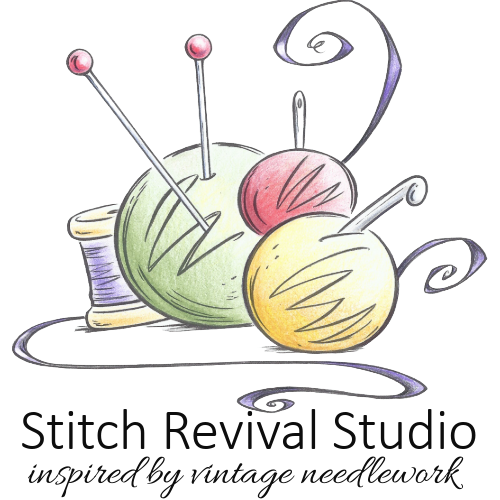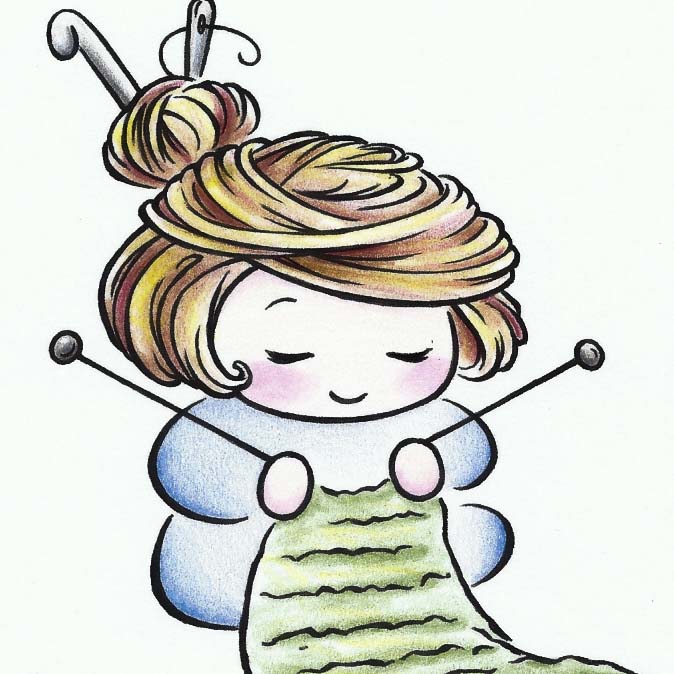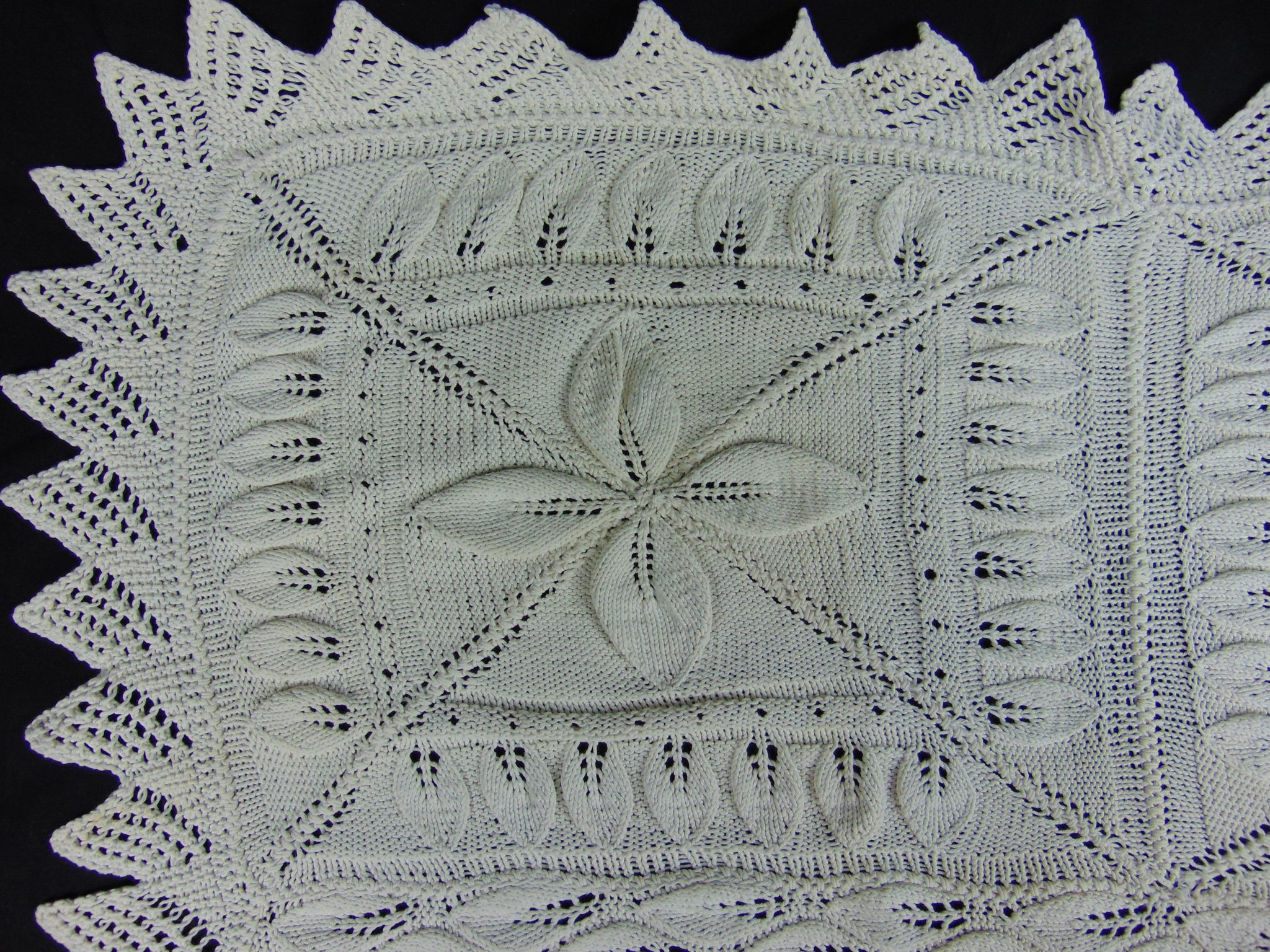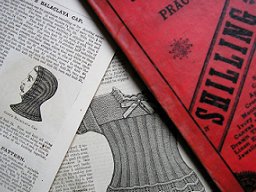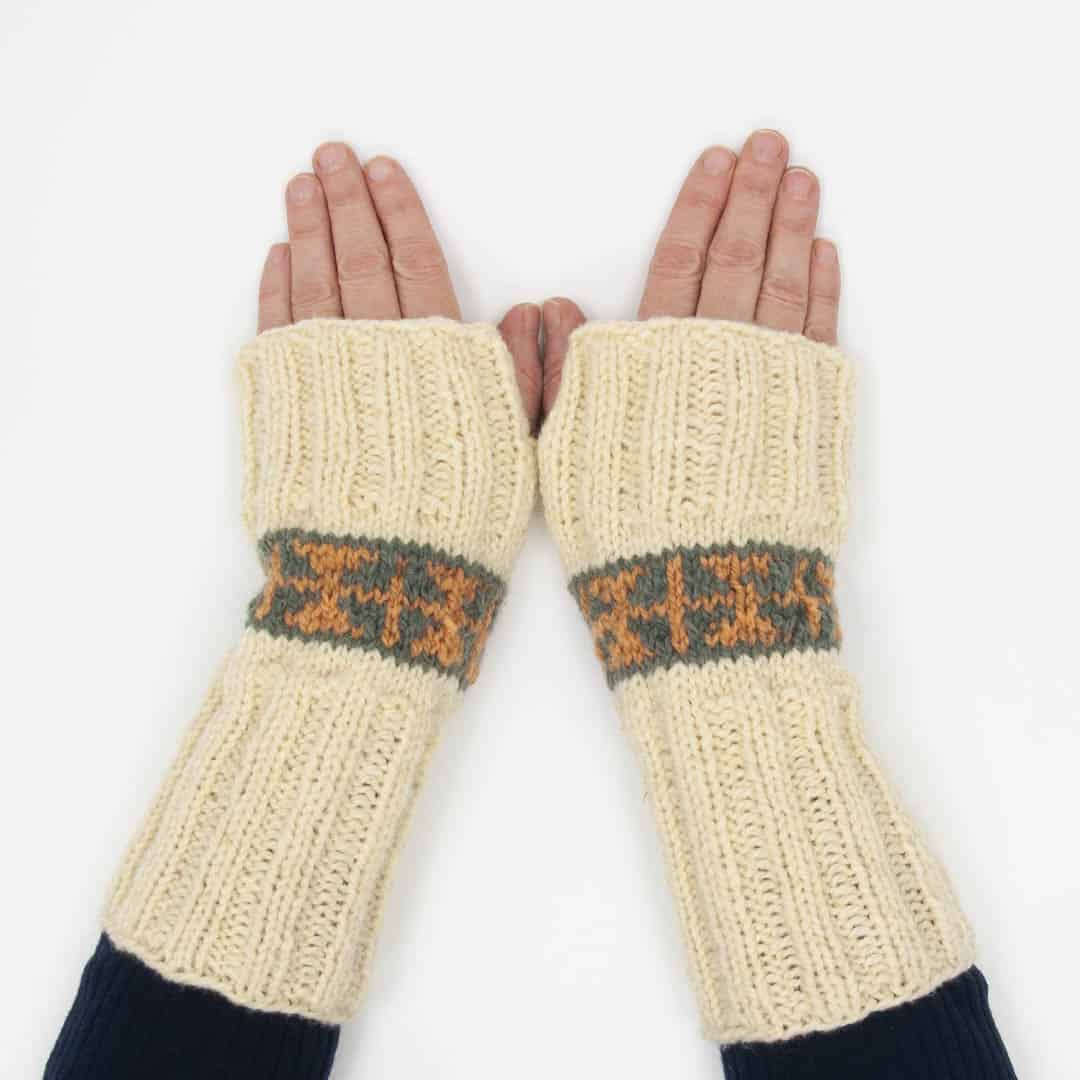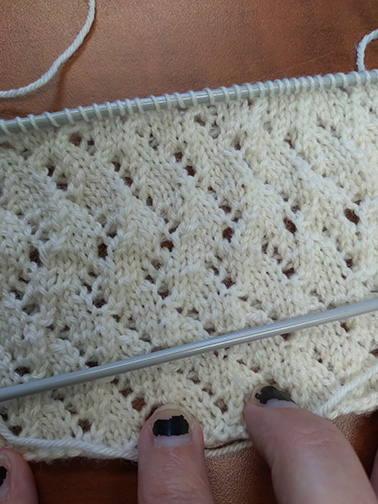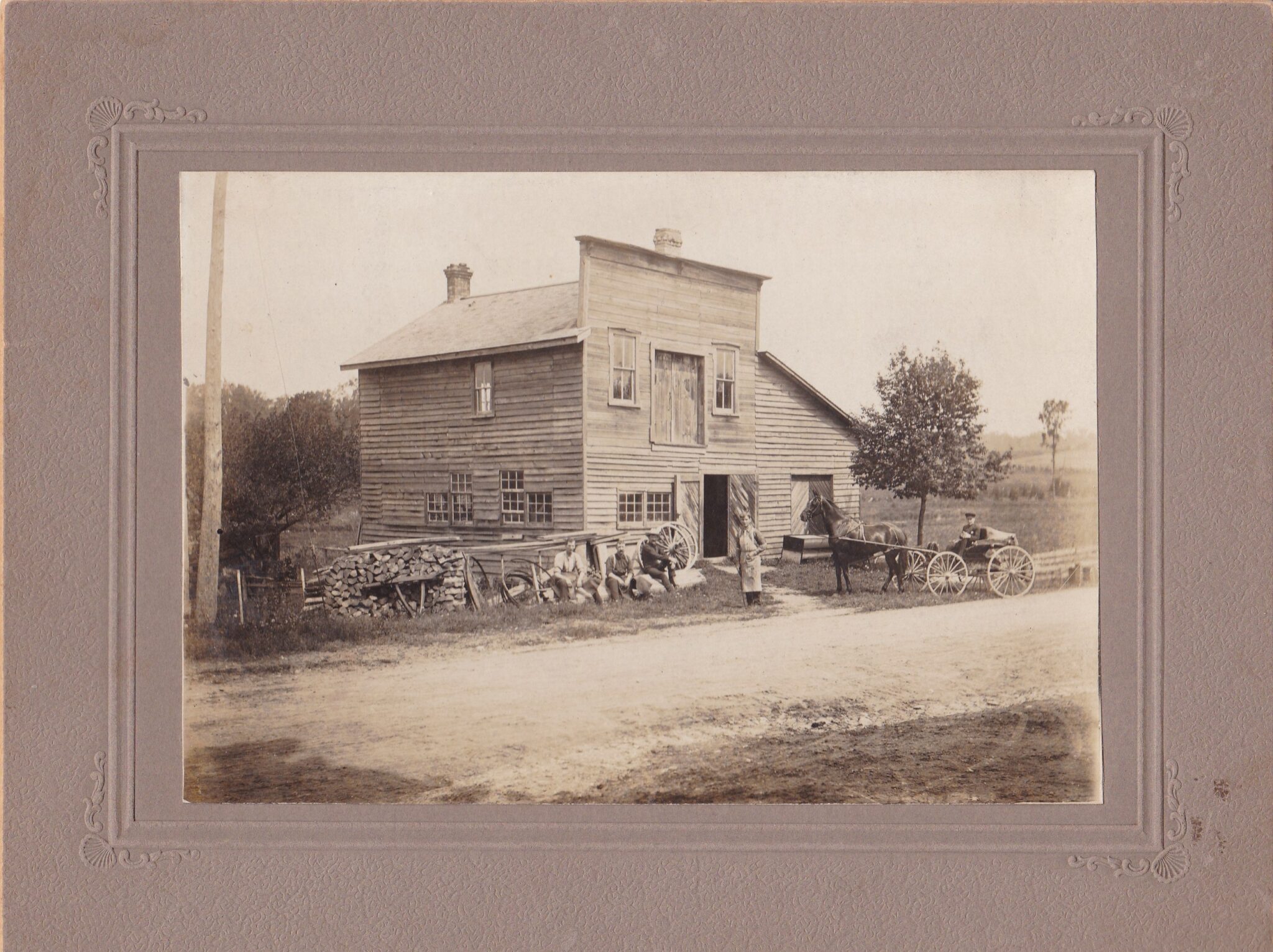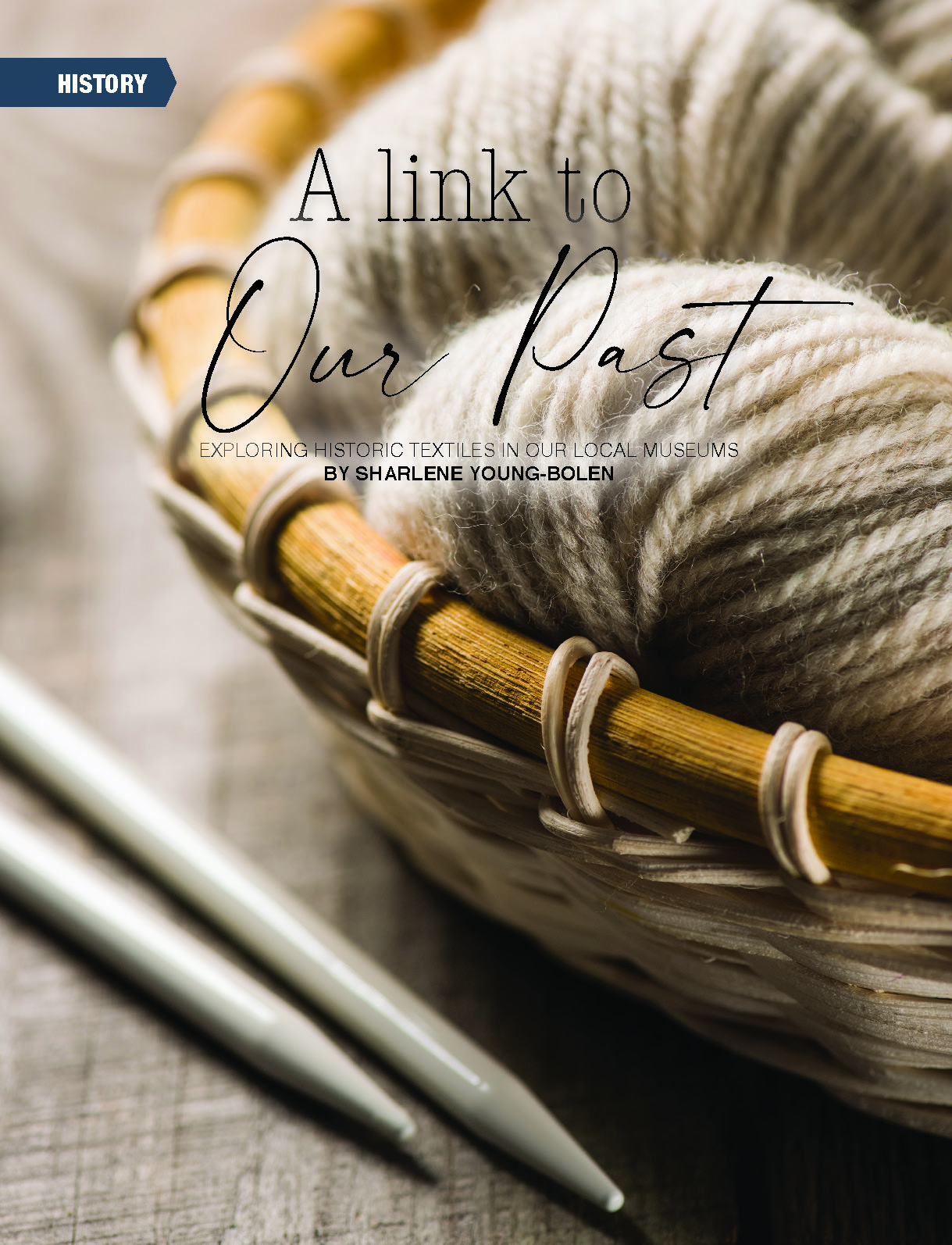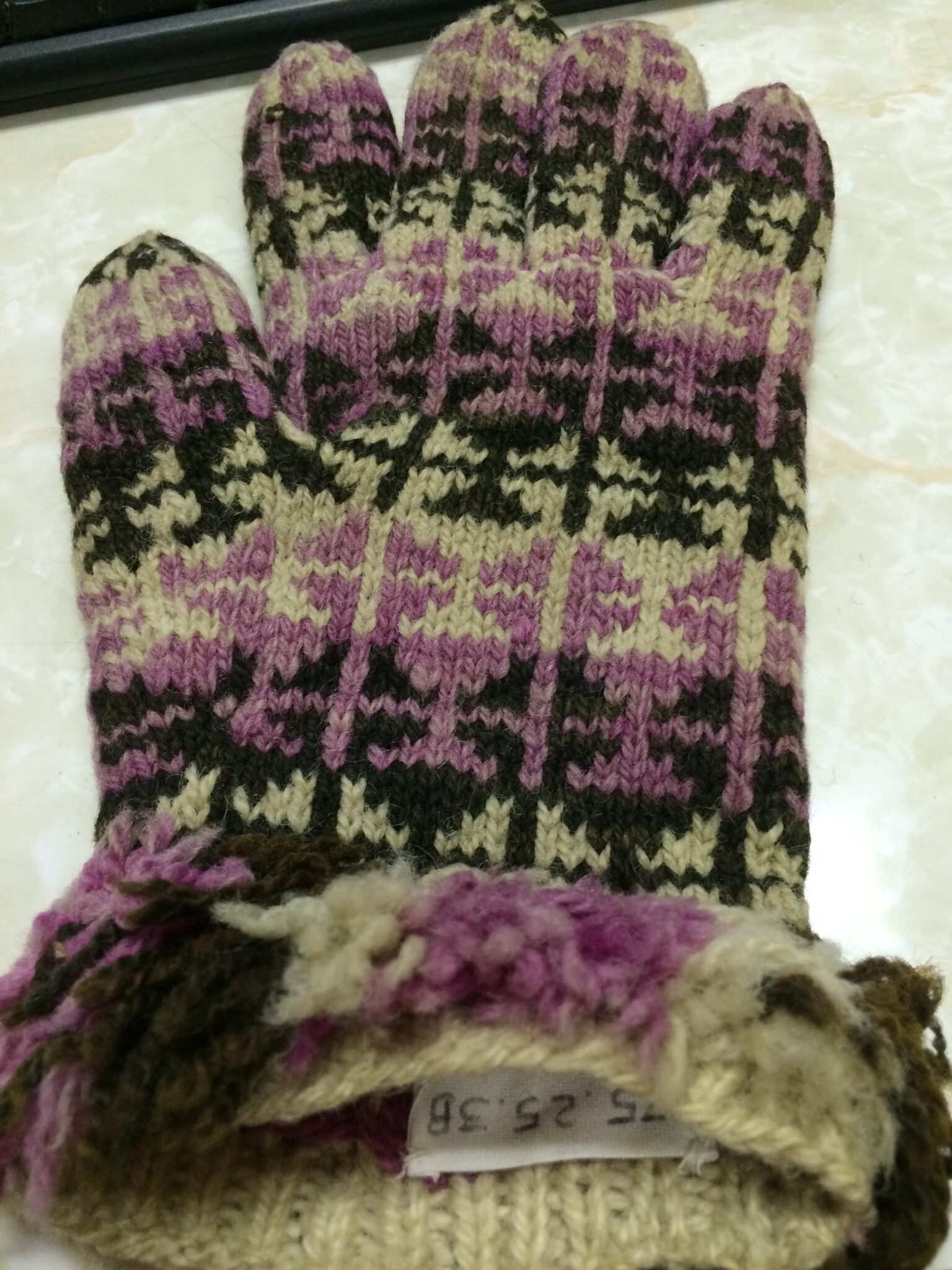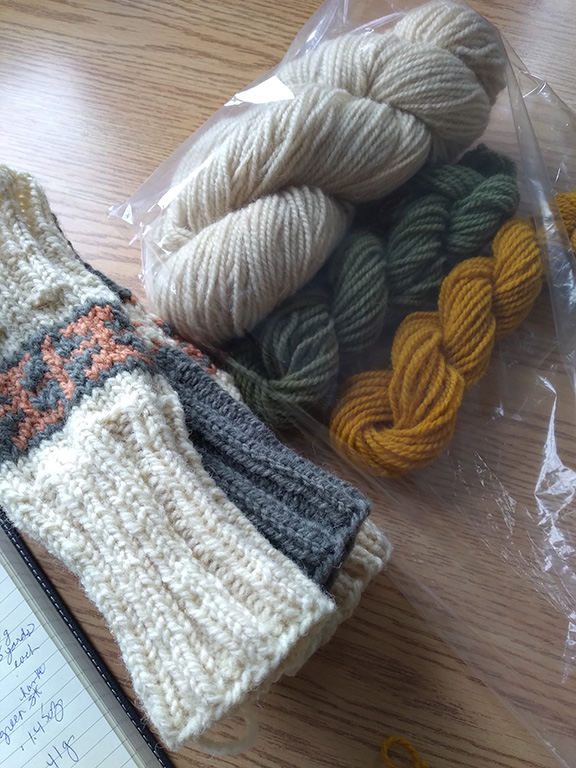-
Stitch Revival Studio now a vendor at Maple & Moose, Blyth
Did you know that I've been accepted to be a vendor at Maple and Moose in Blyth?! It's true! . Stitch Revival Studio has moved into a main street retail vendor space. So excited to be in this space with so many other creative makers and top-notch Canadian products!
-
Pillow inspired by 1890 bureau scarf
Recreating the pattern of a knit counterpane bureau scarf from the collection of the Huron County Museum and Historic Gaol is a fascinating trip through vintage knitting patterns and traditions. Counterpanes – white bed coverlets or bedspreads – were quite popular in the mid-1800s and into the 1900s and were traditionally made from white or cream-coloured cotton yarn that was so readily available at that time. The coverlets were also sometimes called quilts and were pieced together, comprised of square or circular motifs for example, in a similar way as a quilt top. The knitted 1890 counterpane bureau scarf in the museum collection consists of three components: 3 squares made up of 4 triangles each, a leaf panel below the…
-
Knitting History Forum
If you are fascinated by knitting and crochet history, the Knitting History Forum is a great resource to check out. The Knitting History Forum is an international society for the history of knitting and crochet. Their members advance and promote the history of knitting through research, exchange of ideas and information and by historical reconstruction. Membership is open to anyone with an interest in the history of knitting and crochet. Their discussion forum alone has been invaluable to my own research into vintage knitting patterns. You can find out more about their work and membership here: https://knittinghistory.co.uk/ Knitting History Forum Conference Last November, I had the wonderful experience of attending…
-
Knitting the Huron Wristers video tutorials
Hi there! I’ve been working on a video series on how to knit the Huron Wristers. The videos are meant to help beginners or knitters with a little experience who would like to knit their own pair of history inspired wristers but maybe need some help with knitting in the round and colourwork. My knitting skill level is experienced beginner, so I’m always learning, reading and asking lots of questions. I would like to let you know that the wristers aren’t difficult to make; with a few basic skills in hand, they are designed to be a friendly and inclusive knit: quick and fun for experienced knitters and a small…
-
The Huron Wristers: a story of connections part 2
Continued from The Huron Wristers: a story of connections part 1 Was there a family tie to either Estonia or the British Isles? The answer would help to identify the glove pattern perhaps. When an instagram post by Best Dishes, a Goderich business owned by Sarah Anderson, appeared in my feed one day identifying the wristers pattern as based on a family heirloom, chance had dropped the perfect opportunity. It was time to connect. A couple messages back and forth and the story unfolded… History of the Wheeler Family Sarah as it turns out, is the daughter of Richard Anderson, great-nephew of Herbert Wheeler. Richard sent the following information about…
-
The Huron Wristers: a story of connections part 1
The story of the creation of the Huron Wristers is a story of connections: the connection of past to present, of generation to generation. Back in 1972 Pearl Wheeler donated a pair of knitted gloves that once belonged to her husband Herbert to the Huron County Museum and Historic Gaol. The museum’s record notes that at the time the gloves were thought to date from 1870 and were knit by a man. Herbert and Pearl lived in Belgrave, Ontario. Herbert had seven siblings, four brothers and three sisters. His parents were Charles Wheeler and Mary Ann Wilkinson. Herbert was a carpenter and apparently also the local barber. How long the…
-
Exploring historic textiles in our local museums
I enjoy reading about and researching historic textiles. For me, these vintage textiles provide a invaluable, tangible link to our past. And as I work at reproducing old knitting patterns and recreating vintage knitted items, I find that the local museums hold a wealth of reference material in their textile collections, providing wonderful period pieces to help with pattern identification and reproduction. Recently I enjoyed the privilege of seeing (virtually, of course) textile items from the collection of the Bruce County Museum and Cultural Centre. I saw many wonderful, beautiful items, some knit, others crocheted, some embroidered, others sewn and so on. From knitted coverlets and clothing, cross stitch samplers,…
-
Huron Wristers and the Colours of Huron
The Blyth History Stitcher is at it again… naturally dyed palette created by FACTS and beautiful wool from Steele Wool Farm, this is definitely a creative fibre collaboration; it’s time for an update on the Huron Wristers. The Huron Wristers Kits are now in production, with the coloured yarn being weighed and divided. The worsted weight wool is from Steele Wool Farm, a Blyth-area fibre producer owned by Margaret Steele. Naturally sourced local dyes, provided by FACTS Blyth, were used to create the palette of the ‘Colours of Huron’. Each kit will have enough wool to knit a pair of medium/large fingerless mitts and will consist of one ball of natural wool (220 yards)…
-
Dress of Many Patterns – lace pattern #1
I thought it was time to write an update on the Dress of Many Patterns and share my own lace sampler swatch in progress. The first row of the eight-row repeat staggers the diagonal of eyelets formed; the pattern is worked in multiples of five stitches and an eight-row repeat. The stitch count remains the same – five stitches per repeat – for each repeat of the pattern throughout. If you’re interesting in trying it yourself, the pattern is below. Gauge: one 5-st repeat and 8 rows = 3/4 inch wide and 1/2 inch tall. Dress of Many Patterns – Lace Pattern #1 Using Heritage Silk from Cascade Yarns, CO…
-
Online collection of Victorian knitting manuals
If you are like me and love to look through vintage knitting and crochet patterns, I just recently stumbled upon an online resource that you might enjoy. The Knitting Reference Library of the University of Southampton includes the published works collected by Montse Stanley, Richard Rutt and Jane Waller. These comprise books, exhibition catalogues, knitting patterns, journals and magazines. The Victorian knitting manuals donated by Richard Rutt have been digitized and can be viewed online for free. You can search through the extensive collection here! Exciting stuff for pattern researchers!
